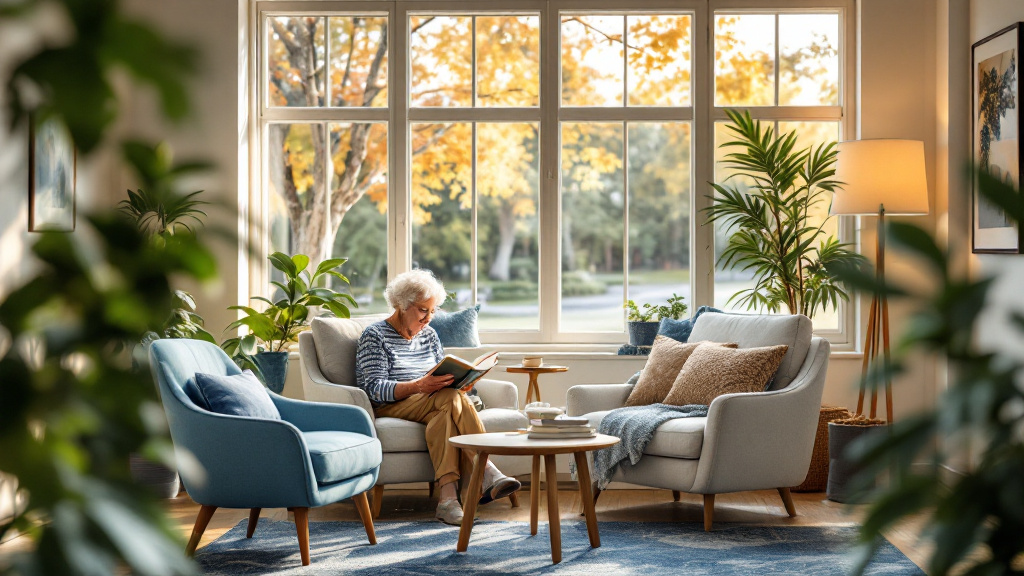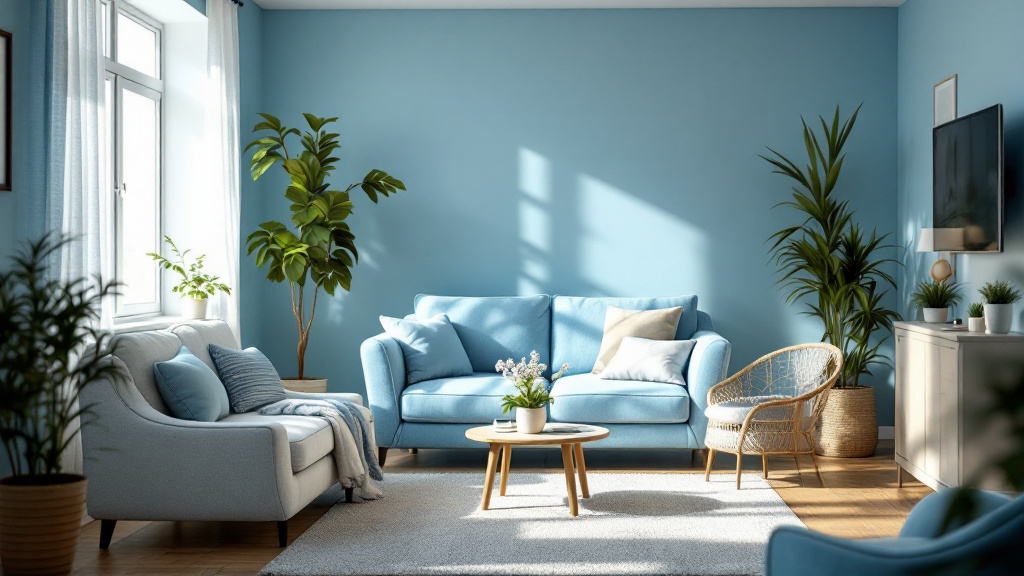
Making Assisted Living Warm and Welcoming
March 4, 2025
Discover tips for making your assisted living space feel like home, creating comfort and warmth for loved ones.
Personalizing Your Assisted Living Space

Creating a warm and welcoming environment in assisted living is essential for seniors. Personalizing their living space not only enhances their comfort but also helps them feel more at home. This section discusses how involving loved ones and creating a sense of identity can significantly improve the assisted living experience.
Involving Your Loved One
Involving seniors in the decorating process helps them feel a sense of ownership and control over their new living space. This participation can effectively reduce initial discomfort and anxiety related to moving into assisted living environments. Familiar items and personal touches, such as family photos, favorite artwork, or sentimental objects, create a continuity that fosters comfort. This approach enhances the transition, making it smoother and more enjoyable for seniors.
Involvement AspectBenefitsSelecting DecorationsEnhances control and ownershipIncorporating Familiar ItemsReduces anxiety and discomfortPersonal TouchesCreates a sense of continuity
Creating a Sense of Identity
Personalizing the living space is vital for cultivating a sense of identity. By transforming their room into a true haven, it reflects their personality and preferences, thereby evoking comfort, connection, engagement, and joy [2].
Incorporating personal items, memorabilia, hobbies, and interests into the living space can significantly contribute to this process. It's important that seniors feel that their environment not only meets their physical needs but also resonates with them emotionally. Making the space uniquely theirs can have a profound impact on their mental well-being.
Personalization ElementExamplesPersonal ItemsFamily photos, sentimental giftsHobbiesBooks, crafts, and artworkMemorabiliaTravel souvenirs, awards
In summary, personalizing an assisted living space involves actively engaging seniors in the process of making decisions about their surroundings. Doing so fosters a sense of identity and belonging, helping to create a warm and welcoming atmosphere that feels like home. For more insights on how to enhance mental health, consider exploring articles on mental health support in assisted living and how assisted living promotes cognitive health.

Assessing Needs and Preferences
When moving to assisted living, assessing individual needs and preferences is essential for creating a comfortable environment. This includes prioritizing must-haves and considering accessibility to ensure that the living space feels like home.
Prioritizing Must-Haves
Before designing a personalized living space, it's important to identify the key features that are essential for comfort and functionality. Residents should prioritize must-haves to aid in their daily lives. Common considerations include:
Must-Have FeaturesDescriptionComfortable SeatingEssential for relaxation and social interactions.Adequate StorageHelps keep the living space organized and clutter-free.Personal Decor ElementsItems that reflect personal style and foster a sense of identity.
Crowded or cluttered spaces can increase risks, especially for those with cognitive or mobility issues. Therefore, assisted living facilities should focus on keeping areas free from unnecessary items while providing the necessary comfort [2].
Considering Accessibility
Accessibility is a crucial aspect of creating a safe and comfortable environment in assisted living. Residents should consider elements that accommodate their physical limitations. Important accessibility features include:
Accessibility FeaturesDescriptionAnti-Skid FlooringReduces the risk of slipping and falling.Safe Stairs and RampsFacilitates movement between levels for those with mobility challenges.Accessible BathroomsEnsures that necessary facilities are easy to use.
Additionally, furniture should provide adequate support without being overly comfortable, allowing residents to rise easily when needed. Assisted living facilities should also adhere to safety guidelines, make provisions for structural modifications, and follow accessibility regulations.
By assessing needs and preferences, residents can transition smoothly into assisted living, making it a warm and welcoming environment. For more insights into how to improve overall well-being, explore topics such as how assisted living promotes cognitive health and mental health support in assisted living.

Enhancing Comfort and Safety
Creating a warm and welcoming environment in assisted living is essential for promoting the comfort and safety of residents. This section focuses on two crucial aspects: designing age-friendly spaces and promoting overall well-being.
Designing Age-Friendly Spaces
To enhance the comfort of residents, it is important to incorporate age-friendly designs in assisted living spaces. This involves selecting materials and layouts that prioritize safety and accessibility. Age-friendly materials like anti-skid flooring, safe stairs, and accessible baths contribute to residents feeling at ease within their environment, reducing the risk of falls.
Key Features of Age-Friendly Designs
FeatureBenefitAnti-skid flooringReduces slip hazardsAccessible bathsProvides safer bathing optionsComfortable furnitureAssists with mobility and support
Furniture should be comfortable but not excessively plush, ensuring residents can easily rise from their seats. Spaces should utilize natural lighting, which is known to help maintain a regular sleep cycle, increase Vitamin D exposure, and lower electricity costs [3]. A well-planned floor layout can significantly influence both comfort and convenience in senior living.
Promoting Well-Being
An essential part of making assisted living feel like home is promoting the well-being of residents. Engaging activities, trained associates, a secure environment, and a supportive community all contribute to the quality of life for seniors. By offering on-site services like wellness programs, salon and spa facilities, and dietary-focused dining options, assisted living facilities can enhance the living experience for residents [5].
Incorporating social activities can also help in reducing feelings of isolation among seniors. For instance, participation in group outings or classes can foster connections within the community. Articles on how to stay socially connected in assisted living and social activities and events in assisted living highlight the importance of these interactions.
Creating an environment that emphasizes comfort and safety not only supports residents' physical needs but also enhances their mental and emotional well-being. Exploring options in design and wellbeing initiatives can significantly improve the overall living experience.
Decorating Tips for Seniors
Creating a warm and welcoming environment in assisted living is essential for making residents feel at home. This section offers valuable tips for choosing colors, patterns, and personalized decor elements.
Choosing Colors and Patterns
The choice of colors and patterns in an assisted living facility can significantly impact the atmosphere. Using warm or lively colors can create a friendlier and more home-like environment. Such choices positively affect residents and their families, making the space feel less institutionalized [3].
Color SchemePsychological EffectWarm Colors (reds, yellows, oranges)Inviting, cheerfulCool Colors (blues, greens, purples)Calming, sereneNeutral Colors (beiges, grays)Comfortable, adaptable
Incorporating patterns can also add warmth and character. Simple designs, such as florals or geometric shapes, are often preferred as they can evoke a sense of nostalgia while being easy on the eyes. Involving residents in the selection process by discussing their preferences for color schemes can be an effective way to ensure the space feels personalized and inviting.
Personalized Decor Elements
Personalization is crucial in creating a sense of familiarity and identity in an assisted living space. Tailoring living spaces to meet the unique needs and personalities of each resident helps foster a homely atmosphere [7].
Integrating personal items and memorabilia can transform a room into a true haven. Residents should consider including:
These personal touches evoke comfort, connection, engagement, and joy, making it easier for residents to feel at home in their new environment [2].
Encouraging residents to have a say in how their space is decorated not only promotes independence but also enhances their sense of ownership over their living environment. This approach is integral in prioritizing their emotional well-being, which is essential in assisted living settings. For more insights on improving mental health for seniors in assisted living, explore our article on how to improve mental health in elderly.
Transitioning to Assisted Living
Transitioning to assisted living can be a significant change for both seniors and their families. It involves addressing emotional concerns and ensuring effective communication during this period to facilitate a smoother adjustment.
Emotional Considerations
Moving into assisted living can evoke a range of emotions, including anxiety, sadness, and loss of independence. It is essential to acknowledge these feelings and provide support. Involving seniors in the decorating process can significantly impact their emotional well-being by helping them feel a sense of ownership and control over their new living space. This involvement can reduce initial discomfort related to moving to assisted living environments.
Creating a welcoming and comforting environment can also help ease these emotional transitions. Familiar items such as personal photos, favorite blankets, or cherished decor should be integrated into the new space. Ensuring seniors are encouraged to participate in community activities fosters social connections, which can alleviate feelings of isolation [8].
Effective Communication
Clear and open communication is vital when transitioning a loved one into assisted living. Families should discuss the change candidly, addressing any concerns the senior may have and focusing on the positive aspects of assisted living, such as new friendships and personalized support. Families should tour facilities together, ask questions about staff-to-resident ratios, and understand the services provided. This engagement enables families to make an informed choice about their loved one’s care.
It is also beneficial to establish routines. Familiar routines can help seniors adjust to their new environment by providing structure and predictability. Encourage open conversations about daily activities and engagement in social options like social activities and events in assisted living.
On the emotional journey of this transition, involving professional support, such as social workers, can provide additional resources. They can assist in handling complex emotions while offering tools for effective communication and mental health support [9].
Transitioning to assisted living is multifaceted. By focusing on emotional support and maintaining effective communication, families can ease their loved one's adjustment and ensure they feel valued and cared for in their new home.
Financial Planning for Assisted Living
When transitioning to assisted living, financial planning plays a crucial role in ensuring a seamless adjustment for seniors and their families. Understanding costs, insurance options, and available financial assistance can help make this transition smoother.
Understanding Costs and Insurance
The costs associated with assisted living can vary greatly depending on the location, services, and amenities offered by the facility. On average, assisted living can range from $2,500 to $5,000 per month. Additionally, some communities may charge entrance fees or additional fees for specific services.
Here is a breakdown of the average costs:
Type of CareAverage Monthly CostAssisted Living$2,500 - $5,000Memory Care$4,000 - $7,000Nursing Homes$6,000 - $8,000
Understanding the type of insurance that may cover these costs is also essential. Many families consider long-term care insurance, which can assist in covering expenses related to assisted living. Additionally, it is important to review Medicare and Medicaid benefits, as they may provide some coverage for specific services or medical care.
Financial awareness can ensure a smooth transition and optimal financial planning for seniors in assisted living [1].
Financial Assistance Options
There are several financial assistance programs available for seniors needing support in covering the costs of assisted living. These options can include:
For more detailed information on how to improve the mental health of seniors in assisted living or to learn about the role of social workers in these environments, consider visiting our articles on how to improve mental health in elderly and the role of social workers in assisted living.
References
[2]:
[3]:
[4]:
[5]:
[6]:
[7]:
[8]:
[9]:



































































































